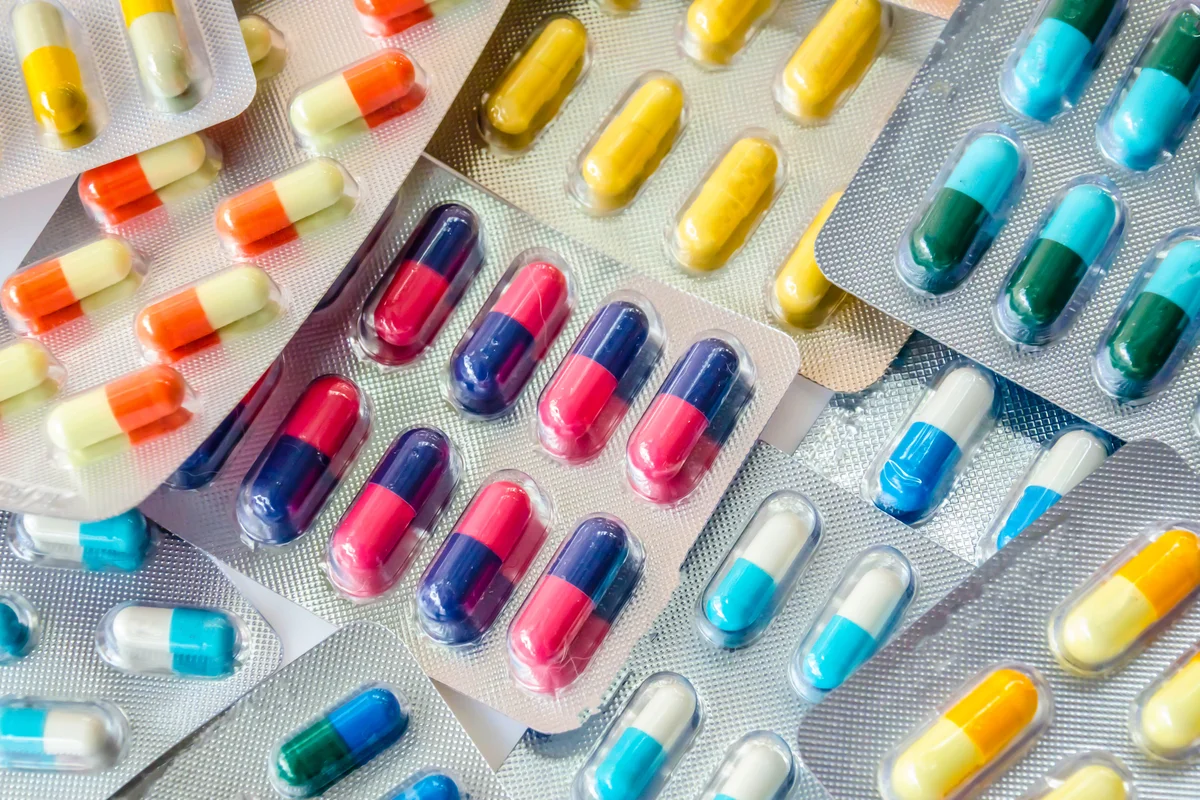Antibiotics, lifesaving tools against bacterial infections, can profoundly affect the gut microbiome.
While they kill harmful bacteria, they also indiscriminately target beneficial microbes, leading to imbalances that can have short- and long-term consequences (Ianiro et al., 2016).
The Effects of Antibiotics on the Gut Microbiome.
Studies show that a single course of antibiotics can reduce gut microbiota diversity by up to 25% (Panda et al., 2014).
Antibiotics can disrupt the gut barrier, increasing the risk of conditions like leaky gut syndrome.
Recovery may take weeks to years, depending on individual factors (Panda et al., 2014).
With beneficial microbes suppressed, opportunistic pathogens like Clostridioides difficile can proliferate, causing infections (Chandra et al., 2021).
Antibiotics can disrupt the gut barrier, increasing the risk of conditions like leaky gut syndrome (Camilleri, 2019).
Antibiotic-induced dysbiosis has been linked to obesity and type 2 diabetes in animal models (Liu et al., 2019).
Recovery Strategies Post-Antibiotics.
- Dietary Interventions.
Prebiotic-Rich Foods: Promote regrowth of beneficial bacteria with foods like garlic, leeks, and asparagus (Solanke et al., 2021).
Probiotics: Strains like Lactobacillus and Bifidobacterium can help replenish gut bacteria (Fooks & Gibson, 2002). Additionally, the yeast Saccharomyces boulardii is frequently prescribed by general physicians or advised by community pharmacists during or after antibiotic treatment. It is a well-documented therapeutic adjuvant for managing antibiotic-associated dysbiosis (Kesavelu et al., 2023).
Postbiotics: Beneficial compounds produced by bacteria, found in fermented foods, can enhance recovery (Thorakkattu et al., 2022).
- Replenish with Fermented Foods.
Incorporate kefir, miso, or kombucha into your diet for a natural probiotic boost (Akhtar et al., 2021).
- Avoid Gut Irritants.
Minimize processed foods, alcohol, and refined sugars, which can hinder recovery (Weaver et al., 2014).
- Exercise and Stress Management.
Physical activity and reduced stress levels promote microbial balance (Lou et al., 2023).
Research Insights.
A 2016 study in Taylor & Francis found that supplementing with probiotics after antibiotics restored microbial diversity faster than diet alone (Grazul et al., 2016).
Long-term studies indicate that children exposed to frequent antibiotics are at higher risk for autoimmune diseases (Horton et al., 2016).
About NIUM.
Antimicrobial resistance (AMR) is one of the most pressing global health threats.
The human gut microbiota plays a critical role in this challenge, acting as a reservoir for AMR genes. These resistance genes can be transferred to pathogenic bacteria, contributing to the spread of AMR throughout the body.
Research has also shown that early life factors, such as the gut microbiome composition in infants, can influence the acquisition of resistance genes. Diet, too, plays a significant role—diets rich in fibre and diversity are associated with lower levels of antibiotic-resistance genes in the gut.
At NIUM, we address this challenge by analyzing metagenomic sequencing data from faecal samples.
We can identify AMR genes present in the gut microbiome covering 27 drug classes, allowing for the development of tailored antibiotic therapies.
Find more about our work on our website: https://www.nium.bio/
References:
Akhtar, G., Bhat, N. A., Masoodi, F. A., & Gani, A. (2021). Small-and Large-Scale Production of Probiotic Foods, Probiotic Potential and Nutritional Benefits. In Advances in Probiotics (pp. 365-395). Academic Press.
Camilleri, M. (2019). Leaky gut: mechanisms, measurement and clinical implications in humans. Gut, 68(8), 1516-1526.
Chandra, H., Sharma, K. K., Tuovinen, O. H., Sun, X., & Shukla, P. (2021). Pathobionts: mechanisms of survival, expansion, and interaction with host with a focus on Clostridioides difficile. Gut Microbes, 13(1), 1979882.
Fooks, L. J., & Gibson, G. R. (2002). Probiotics as modulators of the gut flora. British Journal of Nutrition, 88(S1), s39-s49.
Grazul, H., Kanda, L. L., & Gondek, D. (2016). Impact of probiotic supplements on microbiome diversity following antibiotic treatment of mice. Gut microbes, 7(2), 101-114.
Horton, D. B., Scott, F. I., Haynes, K., Putt, M. E., Rose, C. D., Lewis, J. D., & Strom, B. L. (2016). Antibiotic exposure, infection, and the development of pediatric psoriasis: a nested case-control study. JAMA dermatology, 152(2), 191-199.
Ianiro, G., Tilg, H., & Gasbarrini, A. (2016). Antibiotics as deep modulators of gut microbiota: between good and evil. Gut, 65(11), 1906-1915.
Kesavelu, Dhanasekhar, and Pramod Jog. “Current understanding of antibiotic-associated dysbiosis and approaches for its management.” Therapeutic advances in infectious disease 10 (2023): 20499361231154443.
Liu, D., Wen, B., Zhu, K., Luo, Y., Li, J., Li, Y., … & Liu, Z. (2019). Antibiotics-induced perturbations in gut microbial diversity influence metabolic phenotypes in a murine model of high-fat diet-induced obesity. Applied Microbiology and Biotechnology, 103, 5269-5283.
Lou, H., Liu, X., & Liu, P. (2023). Mechanism and implications of pro-nature physical activity in antagonizing psychological stress: the key role of microbial-gut-brain axis. Frontiers in Psychology, 14, 1143827.
Panda, S., El Khader, I., Casellas, F., Lopez Vivancos, J., Garcia Cors, M., Santiago, A., … & Manichanh, C. (2014). Short-term effect of antibiotics on human gut microbiota. PloS one, 9(4), e95476.
Solanke, S., Kochar, N., Tawar, M., Sonar, K., Kadu, S., & Tayade, V. (2021). Recent Studies on Potential Prebiotic Herbs–A Brief Review.
Thorakkattu, P., Khanashyam, A. C., Shah, K., Babu, K. S., Mundanat, A. S., Deliephan, A., … & Nirmal, N. P. (2022). Postbiotics: current trends in food and pharmaceutical industry. Foods, 11(19), 3094.
Weaver, C. M., Dwyer, J., Fulgoni III, V. L., King, J. C., Leveille, G. A., MacDonald, R. S., … & Schnakenberg, D. (2014). Processed foods: contributions to nutrition. The American journal of clinical nutrition, 99(6), 1525-1542.

